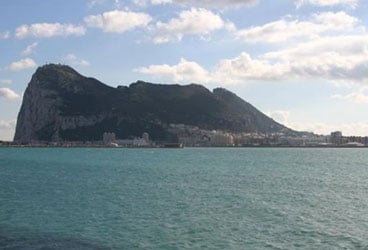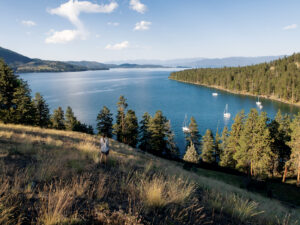
Gibraltar368
When approaching the Strait of Gibraltar, I’ve twice encountered a levanter, the strong easterly Mediterranean wind. On the first occasion, the levanter blew at up to 50 knots, and we had a great time waiting for three days in Cadiz, Spain–in flat-calm conditions–for the wind to die in the strait. After three days with no sign of it ending, we headed for the strait and encountered conditions exactly the same as on a trip I made eight years later. Both times the breeze steadily increased as we neared the strait. To stay out of the waves, we hugged the beach, motorsailing with three reefs in the main in about 30 to 60 feet of water. We took a long, wet tack offshore to avoid the shoal off Cabo Trafalgar, then came back in to within half a mile of the beach. The scenery was magnificent, with small towns scattered along the golden sandy beaches. The big breezes found here make this a windsurfing and kiteboarding mecca. As we neared Punta de Tarifa, the southernmost point of Europe, the breeze increased, but as we emerged from the lee of the point, there was no corresponding increase in the seas. Ten miles farther into the Med, near Bahia de Algeciras and Gibraltar, it was again flat calm.








